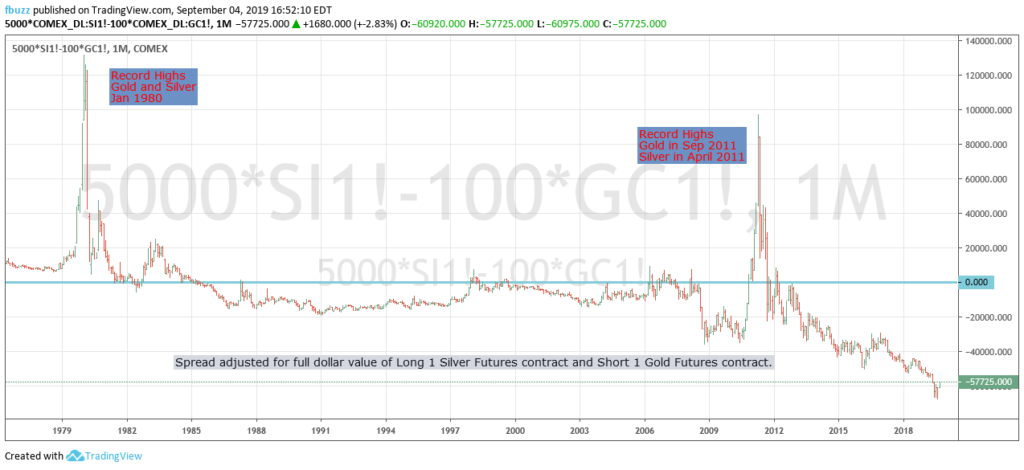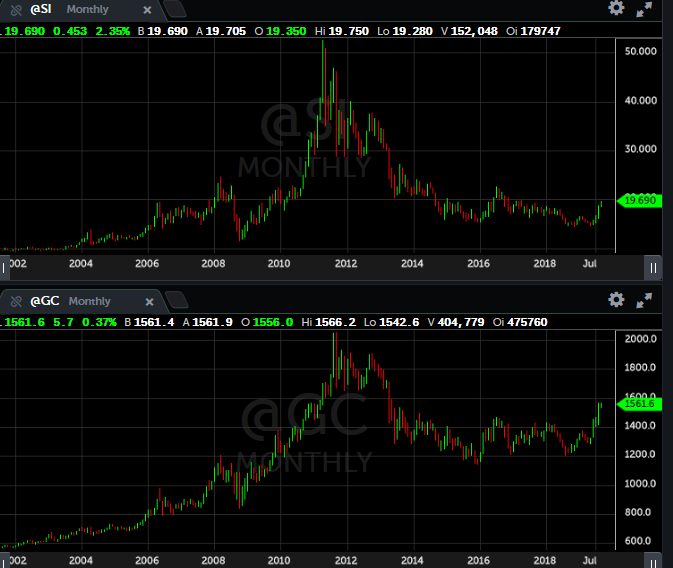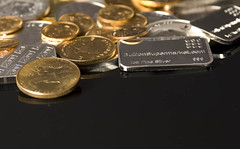If you are expecting the gold market to hit record highs again, it could be a better strategy to use a spread trade that consists of buying silver and shorting gold. This may go contrary to logical thought, but it has to do with silver outperforming gold historically in the acceleration phase toward record highs.
Another Bull Market in Gold
Gold has become firmly entrenched in a bull market and no doubt many gold traders have a potential run to record highs in the back of their minds. I have discussed in previous articles how gold broke out of a long term consolidation pattern to get here. The patterns of higher highs, consolidations, breakouts and shallow retracements are very supportive to this strong trend.
I believe the bull market in gold this year originated from the combination of a multi-year consolidation breakout on the charts and extremely low to negative interest rates in Europe. Central banks around the world have been buying gold at a strong pace. Russia, China and Turkey have made large purchases and it looks like the pace may continue. Russia may be trying to lower its dependence on the dollar as a reserve currency and replace it with gold. This could be an interesting trend and be very supportive for gold.
There are also many other factors supporting this precious metal. The stock market is pushing well beyond the typical duration for bull markets and gold may be acting as a hedge or safe haven. The trade war with China is causing uncertainty for the markets and gold is a likely benefactor as long as this continues. I see the push toward negative interest rates in Europe, central bank buying and a rate cut on the horizon in the US as the prevailing tailwinds to support gold moving higher.
Previous Record Highs in Gold
The two major peaks with record highs for gold prices occurred in 1980 and 2011. The 1980 peak price in gold was about $850 an ounce. Inflation was running wild and there was no shortage of geo-political issues. Gold became the go-to investment and then wild speculation turned the market into one of the largest bubbles in recent history.
The silver market had a run that rivaled its counterpart in 1980. The Hunt Brothers, who were accused of trying to corner the silver market, accumulated massive amounts of silver and drove the price to $50.50 per ounce. Who knows how high prices would have went if the commodity exchanges and the government didn’t intervene to thwart their plans. The Hunt’s were playing by the rules and saw an opportunity, but the rules were changed and there was nothing they could do about it. This is a very interesting story to read up on if you are not familiar with it.
The bull run for gold and silver into 1980 were memorable events, to say the least, in the commodities world. There were many opportunities to make money on long positions in silver and gold during this solid uptrend in prices, provided that positions were sold before prices crashed. However, silver had a much higher percentage return than gold. Silver gained about 736% and gold gained about 292% from January 1979 to the peaks in 1980. Some people might attribute this to the price manipulation by the Hunt brothers as the reason why silver gained more, but there was another run to record highs in 2011.
In 2011, the markets were still digesting the financial meltdown of 2008 and the Fed was printing money at a dizzying pace. Needless to say, investors were seeking safe havens and realized the flood of liquidity hitting the economy would be very supportive for gold. Commodity indexes reached record highs in 2011 and gold was leading the charge. Gold made a run to new record highs above $1,900 and silver flirted with the $50 level again.
The percentage gains from the lows in 2008 to the peaks in 2011 greatly favored silver once again. Silver increased about 493% and gold gained about 183% during this trend. There was no market manipulation from the Hunt brothers to add to the equation this time. In fact, a good case could be made for gold making more sense as an investment in that financial environment. However, silver greatly outperformed gold on a percentage basis in the historic runs of both 1980 and 2011.
Performance of the Silver and Gold Spread
In doing research on the relationship between gold and silver, I looked at the performance of the spread of buying silver and selling gold against it and how it performed over the last 30 years. I am using the futures contracts for these examples. The silver contracts consists of 5,000 ounces of silver and the gold contract is 100 ounces of gold.

The chart above shows two major peaks in prices of 1980 and 2011. The blue line signals the zero value where the total contract values of gold and silver are equal. The numbers above the zero line are the net value of holding 1 long silver contract and short 1 gold contract. In the two peaks, the winning strategy is being long this spread and the opposite position would have worked just as well when the markets reversed from their peaks in these time periods.
Currently, the spread is near the lowest value seen on a 30 year chart. This means gold has outperformed the silver market over time. It remains to be seen if this trend will continue or the spread is about to reverse direction at these low levels. If the gold market is setting up for a multi-year run at new record highs, this could be an attractive time to look at the silver/gold spread. There is nothing wrong with holding long positions in gold or silver if you are expecting higher prices in the next couple years, but the spread could offer similar upside potential with some possible downside protection.

Silver and gold are fairly well correlated, but it is a matter of which one tends to be stronger or weaker over time. Under a scenario of gold prices moving to $2,000 and silver going to $40 an ounce from current levels, the silver/gold spread would increase in value by about $58,000. Just holding a long position from these levels would return about $44,000 for gold and about $102,000 for silver. This example is just for hypothetical purposes and there is no guarantee these markets will move higher from here or even be correlated. It does represent how the spread could perform versus simple long positions in a rising market.
In the above example, the silver/gold spread could outperform a strategy of just being long gold. It could also offer protection to the downside. If gold has a sharp selloff, it is likely silver will have a fairly similar move. The spread could offset losses to a degree since it is long one metal and short another.
Market Outlook for the Silver – Gold Spread
I would look at this spread from a long term perspective. The spread appears to perform best when the trend accelerates to record highs from the patterns seen in the past. Granted, there are basically two examples from 1980 and 2011, but they occurred under different market environments and had similar results. There is an overall tendency for the spread to trend downward into negative territory, except for the sharp runs to record highs. The moves to record highs in 1980 and 2011 had very sharp moves for about 6 months into the peaks. Therefore, a trader or investment should probably believe the precious metals are on the verge of another record run in order to enter this trade.
From a shorter term perspective, this spread reached an extreme level on the downside in the last couple months and looks like it is bouncing. This could be an oversold bounce or maybe the beginning of a trend higher, since it might be at such extreme levels. A trade could be placed in this area with an exit below the low seen price on the chart. This could be a relatively low risk trade with some very good upside potential. It is usually dangerous trying to pick bottoms on charts like this, so I would recommend keeping the risk small if it is intended for a short term trade.
It remains to be seen whether the dynamics of the markets have shifted to continue favoring gold over silver into the future. Arguments could be made on both sides of this debate. However, I tend to not ignore history and the mentality of gold and silver traders doesn’t seem to be much different than when I started trading over 25 years ago. Therefore, if there is another run to record highs in these markets, I would expect silver to repeat its role of outperforming gold.




